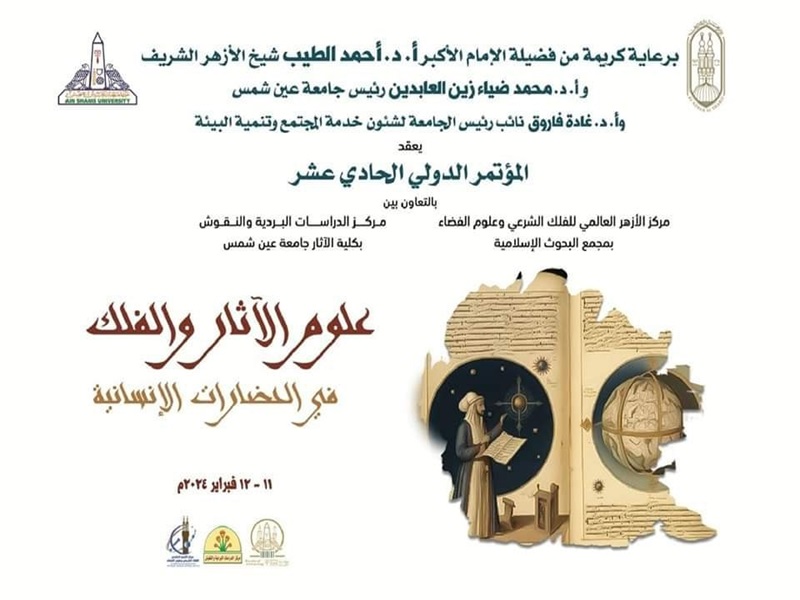
Launching of the Archeology and Astronomy in Human Civilizations Conference
The Faculty of Archeology, at Ain Shams University, announced the launch of the activities of the eleventh international conference of the Center for Papyrus and Inscriptions Studies affiliated with the Faculty at the Al-Azhar Conference Center, which is held with the participation of the Islamic Research Academy, represented by the Al-Azhar International Center for Forensic Astronomy and Space Sciences.
The conference activities, entitled: “Archaeology and Astronomy in Human Civilizations,” were held over the course of two days, February 11-12, under the patronage of the Grand Imam, Prof. Ahmed Al-Tayeb, Sheikh of Al-Azhar, and Prof. Mohamed Diaa Zain El-Abedeen, President of Ain Shams University, and the general supervision of His Excellency the Undersecretary of Al-Azhar, Prof. Muhammad Al-Duwaini, Prof. Ghada Farouk, Vice President of Ain Shams University for Community Service and Environmental Development Affairs, headed by Prof. Hossam Tantawi, Dean of the Faculty of Archaeology, and Prof. Nazir Ayyad, Secretary General of the Islamic Research Academy.
The conference includes three axes: The first axis: reading the archaeological and heritage reality related to astronomy, which includes astronomy between art and architecture, astronomical paintings and scenes in Egypt and neighboring countries, and how to photograph them, astronomical observatories and choosing their locations, astronomical tools in the astronomical manuscript, astronomy on ancient writing media: (papyrus – sherds - Manuscripts), astronomical museums and virtual tours.
The second axis: Astronomy and its impact on the formation of ancient religions across civilizations. It discusses astronomy and religion across ancient civilizations, the impact of astronomy on the growth of cultural thought in the civilizations of the ancient world, the history of astrology, astronomy, and star calculations, the movement of celestial bodies, and the purposes of Islamic law, the sciences of the body in Islamic civilization, cosmic deities between planetary and stellar in Egypt and neighboring countries, the science of calendars between lunar and solar, astronomy between stars and myths, astronomy and philosophy, astronomy between literary writings and contributions of scholars, customs, and traditions, and their connection to heritage and astronomy.
While the third axis discussed: knowledge integration towards a sustainable economy for astronomical archaeological sites, it discusses astrophysics in archaeology, city and urban planning and its connection to astronomy, exploiting astronomical antiquities for national income and encouraging tourism towards archaeological sites related to astronomy, preserving, maintaining and restoring astronomical antiquities, and planetarium domes, and its use in teaching young people, the connection of astronomy to commercial, agricultural, and navigational activities.
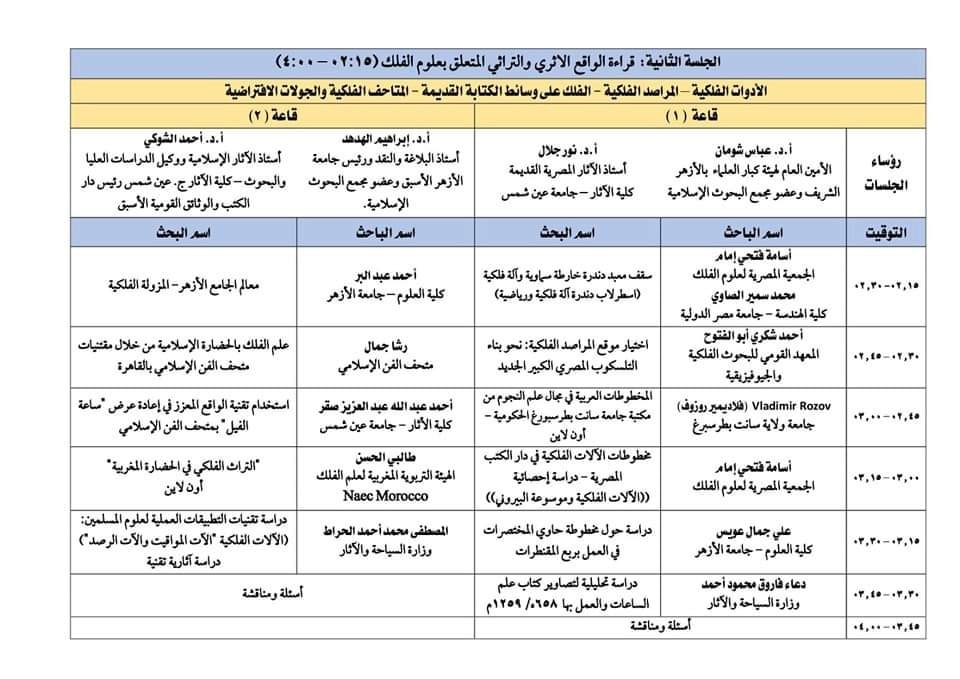 |
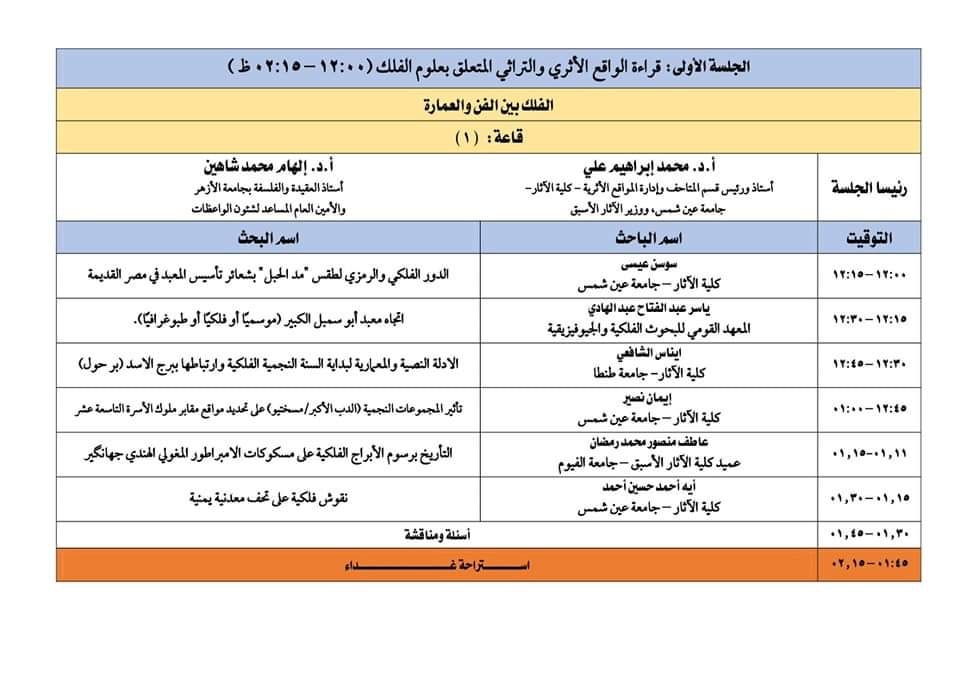 |
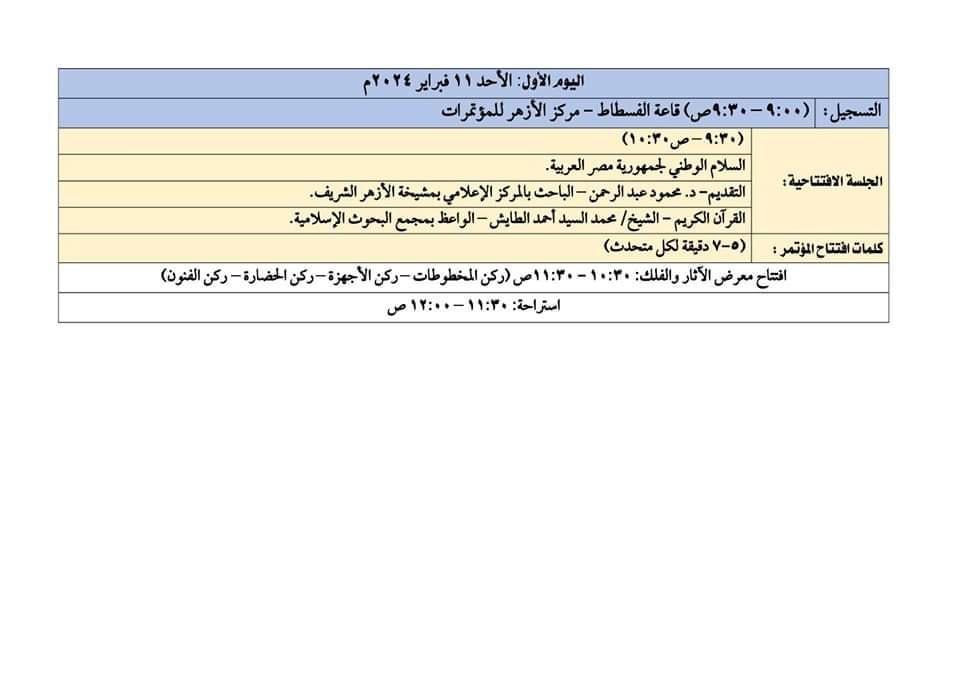 |
||
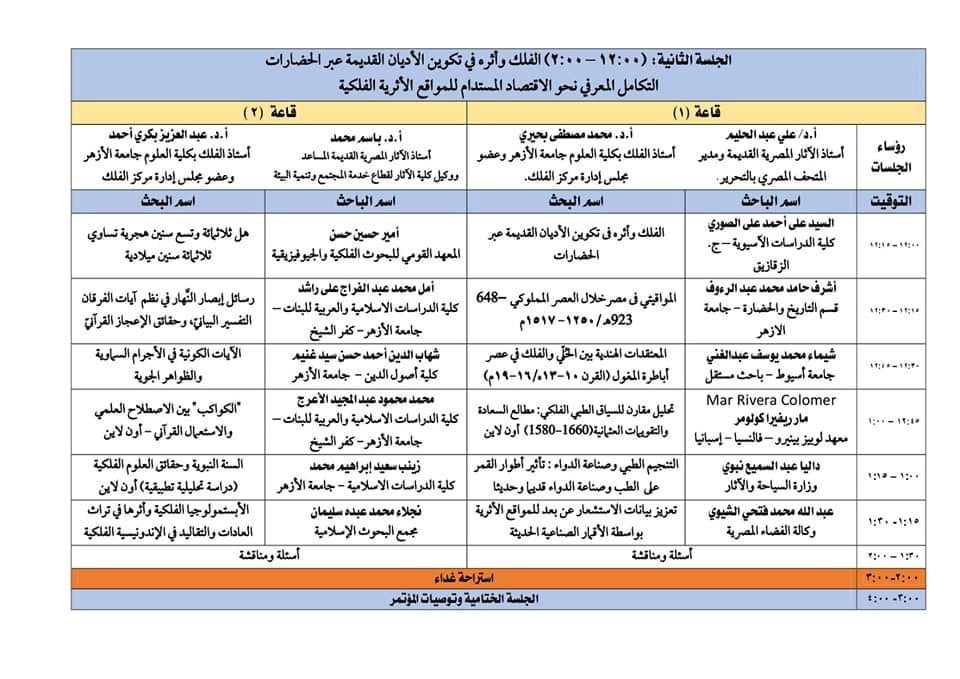 |
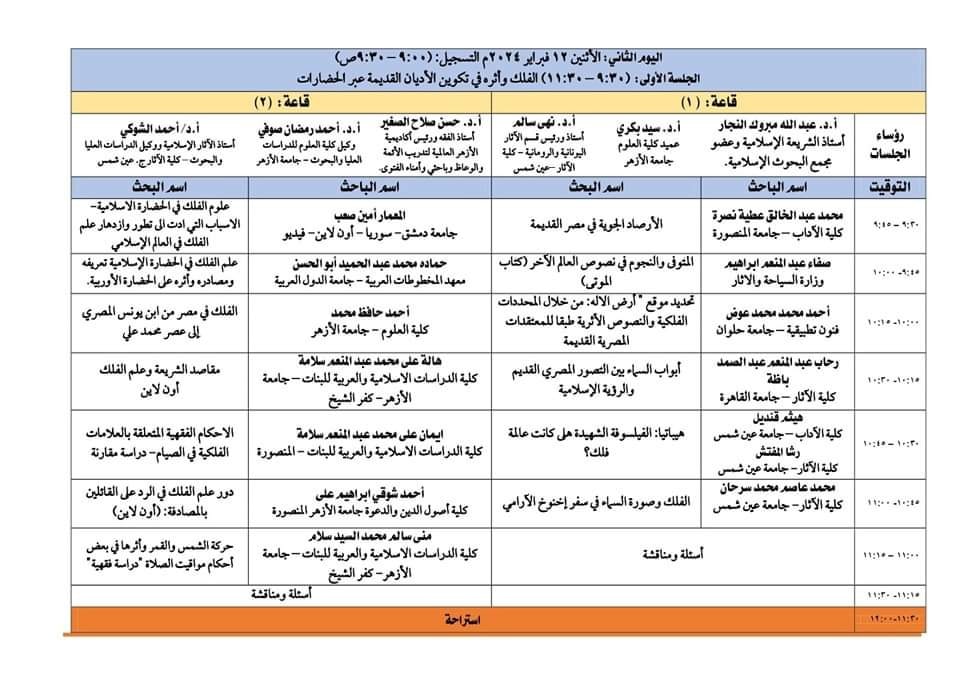 |
.svg)



